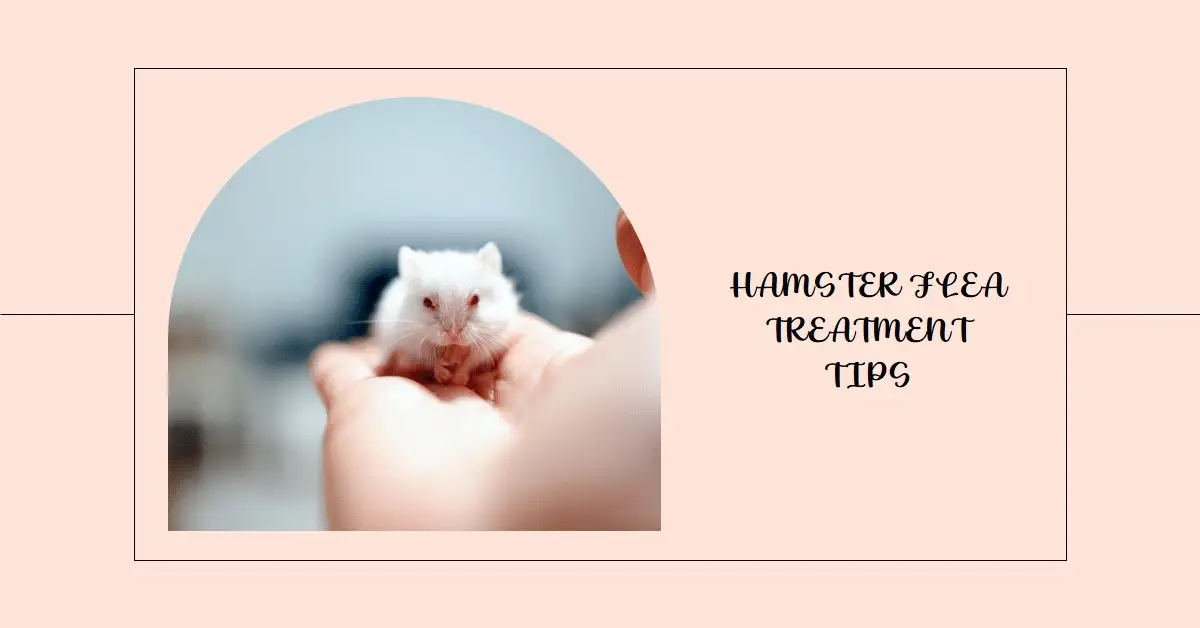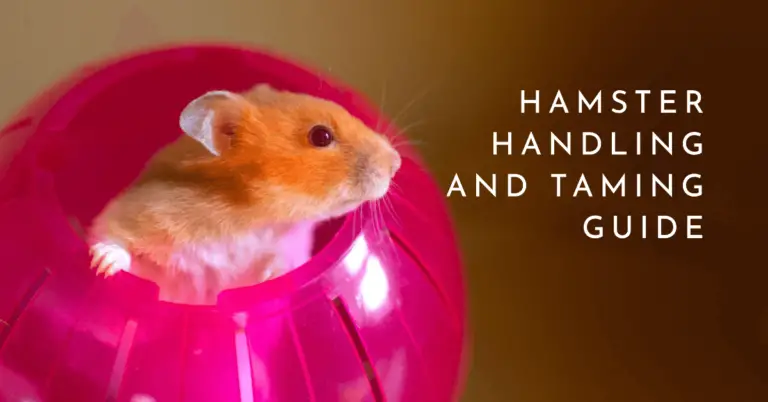Introduction
Owning a hamster can be an incredibly rewarding experience. These adorable little furballs make wonderful pets, providing companionship and endless entertainment. However, one issue that can arise is dealing with fleas. Fleas are not only a nuisance, but they can also pose serious health risks to your hamster if left untreated. In this comprehensive guide, we’ll dive into everything you need to know about getting rid of fleas on your hamster, ensuring your furry friend remains happy, healthy, and flea-free.
Understanding Fleas and Their Impact on Hamsters
Before we delve into the methods of flea removal, it’s essential to understand what fleas are and how they can affect your hamster’s well-being.
What are Fleas?
Fleas are tiny, wingless insects that feed on the blood of mammals and birds. They are parasitic pests that can cause significant discomfort and health issues for their hosts.
How Do Fleas Infect Hamsters?
Fleas can easily find their way onto your hamster’s fur through contact with infested bedding, other pets, or even by hitching a ride on your clothing or furniture.
The Impact of Fleas on Hamsters
While fleas may seem like a minor nuisance, they can have severe consequences for your hamster’s health:
- Skin irritation and hair loss: Flea bites can cause intense itching, leading to excessive scratching, which can result in skin irritation, hair loss, and potentially open wounds.
- Anemia: In severe cases, fleas can consume enough blood to cause anemia, especially in young or elderly hamsters.
- Tapeworm transmission: Fleas can carry and transmit tapeworms to your hamster, leading to additional health complications.
- Stress and discomfort: The constant irritation and itching caused by fleas can lead to significant stress and discomfort for your hamster.
With an understanding of the potential risks, it’s crucial to take prompt action to eliminate fleas and protect your hamster’s well-being.
Preparing for Flea Treatment
Before implementing any flea treatment methods, it’s important to properly prepare your hamster’s living environment. This will ensure the effectiveness of the treatment and prevent reinfestation.
Step 1: Quarantine Your Hamster
To prevent the spread of fleas, it’s essential to isolate your hamster from other pets and their living areas. Set up a temporary, clean enclosure for your hamster during the treatment process.
Step 2: Clean and Disinfect the Habitat
Thoroughly clean and disinfect your hamster’s cage, bedding, toys, and all other accessories. Use a mild, pet-safe disinfectant and hot, soapy water to eliminate any remaining fleas, eggs, or larvae.
Step 3: Vacuum Thoroughly
Vacuum the area where your hamster’s cage is located, including any nearby carpets, furniture, and crevices. This will help remove any fleas, eggs, or larvae that may have escaped the cage.
With your hamster safely quarantined and the living environment thoroughly cleaned, you’re now ready to proceed with the flea treatment methods.
Natural Flea Treatment Methods
There are several natural and gentle methods you can try to eliminate fleas from your hamster. These options are generally safer and less harsh than chemical treatments, making them a preferred choice for many hamster owners.
- Bathing with Mild Soap and Water
One of the simplest and most effective natural methods is bathing your hamster with mild, pet-safe soap and warm water. This can help drown and remove any adult fleas present on your hamster’s fur.
How to Bathe Your Hamster:
- Prepare a shallow bath or sink with lukewarm water and a few drops of mild, unscented soap.
- Gently place your hamster in the water and use a soft cloth or your fingers to lightly massage the soapy water into their fur.
- Be careful not to submerge their head or get water in their ears or eyes.
- Rinse thoroughly with clean, lukewarm water.
- Dry your hamster with a clean, soft towel, taking care to ensure they are completely dry before returning them to their enclosure.
- Diatomaceous Earth
Diatomaceous earth (DE) is a natural, powdery substance made from the fossilized remains of tiny aquatic organisms called diatoms. DE works by dehydrating and damaging the exoskeleton of fleas, ultimately killing them.
How to Use Diatomaceous Earth:
- Purchase food-grade diatomaceous earth, as it is safe for use around pets.
- Lightly dust your hamster’s bedding and any areas they frequent with a thin layer of DE.
- Avoid direct contact with your hamster’s eyes, nose, and mouth during application.
- Leave the DE in place for a few days, and then vacuum or replace the bedding.
- Repeat the process as needed until the flea infestation is eliminated.
- Neem Oil
Neem oil is a natural, plant-based oil derived from the neem tree. It has insecticidal properties that can effectively kill fleas and other pests without causing harm to your hamster.
How to Use Neem Oil:
- Dilute a small amount of neem oil with water or a carrier oil, such as coconut or olive oil.
- Using a soft cloth or cotton ball, gently dab the diluted neem oil onto your hamster’s fur, avoiding sensitive areas like their eyes, nose, and mouth.
- Allow the neem oil to sit for a few hours before gently brushing or wiping away any excess.
- Repeat the process as needed until the flea infestation is eliminated.
Remember, when using natural remedies, it’s essential to exercise caution and follow the instructions carefully to ensure your hamster’s safety.
Chemical Flea Treatment Options
If natural methods prove ineffective or the flea infestation is severe, you may need to consider chemical treatments. However, it’s crucial to exercise extreme caution when using chemical products on or around your hamster, as they can be toxic if misused.
- Spot-on Flea Treatments
Spot-on flea treatments are liquid or gel formulations applied directly to the skin of your hamster. These products typically contain insecticides that are absorbed through the skin and distributed throughout the hamster’s fur and skin to kill fleas.
It’s important to note that spot-on treatments designed for cats and dogs are not safe for use on hamsters. Always consult with a veterinarian before using any chemical flea treatment on your hamster, and follow the instructions carefully.
- Flea Sprays and Powders
Flea sprays and powders are designed to be applied directly to your hamster’s bedding and living environment. These products often contain insecticides that can kill adult fleas, larvae, and eggs.
When using flea sprays or powders, it’s crucial to follow the manufacturer’s instructions carefully and ensure proper ventilation. Always remove your hamster from the enclosure during application and allow the area to dry completely before returning your pet.
- Veterinary-prescribed Medications
In severe cases of flea infestation or if your hamster is experiencing adverse health effects, your veterinarian may recommend prescription medications or topical treatments. These options should only be used under the guidance of a qualified veterinary professional, as they can be potent and may carry potential risks.
Regardless of the chemical treatment method you choose, it’s essential to carefully read and follow all instructions, and never use products designed for other animals, such as dogs or cats, on your hamster.
Preventing Future Flea Infestations
Once you’ve successfully eliminated the flea infestation, it’s crucial to take preventive measures to avoid future infestations. Here are some tips to help keep your hamster flea-free:
- Regular Cleaning and Disinfection
Maintain a consistent cleaning routine for your hamster’s cage, bedding, and accessories. Use a pet-safe disinfectant to eliminate any potential flea eggs or larvae. - Vacuum Regularly
Vacuum the area around your hamster’s cage frequently to remove any fleas, eggs, or larvae that may have escaped. - Inspect New Items
Before introducing any new bedding, toys, or accessories into your hamster’s enclosure, inspect them thoroughly for signs of fleas or eggs. - Monitor for Signs of Reinfestation
Keep a close eye on your hamster for any signs of scratching, hair loss, or other indicators of a potential flea infestation. Early detection is key to preventing a full-blown infestation. - Consider Preventative Treatments
In some cases, your veterinarian may recommend using preventative flea treatments, such as spot-on or oral medications, to help protect your hamster from future infestations.
By following these preventive measures, you can significantly reduce the risk of future flea infestations and ensure your hamster remains healthy and happy.
Frequently Asked Questions
- Can fleas live on hamsters?
Yes, fleas can infest hamsters and live on their fur, feeding on their blood. This can lead to various health issues, including skin irritation, hair loss, and anemia. - How do I know if my hamster has fleas?
Signs that your hamster may have fleas include excessive scratching, hair loss, visible fleas or flea dirt (tiny black specks) on their fur or bedding, and visible skin irritation or scabs. - Can I use dog or cat flea treatments on my hamster?
No, you should never use flea treatments designed for dogs or cats on your hamster. These products can be toxic and potentially fatal for small animals like hamsters. - How long does it take to get rid of fleas on a hamster?
The time it takes to eliminate a flea infestation on your hamster can vary depending on the severity of the infestation and the treatment methods used. With consistent and thorough treatment, most infestations can be resolved within a few weeks. - Can I use diatomaceous earth directly on my hamster?
While diatomaceous earth is generally considered safe for use around pets, it’s not recommended to apply it directly to your hamster’s fur. Instead, use it to treat their bedding and living environment. - How often should I bathe my hamster to get rid of fleas?
Bathing your hamster too frequently can be stressful and strip their fur of natural oils. Aim to bathe them only as needed, typically once a week or less, during the flea treatment process. - Can fleas make my hamster sick?
Yes, fleas can potentially transmit tapeworms and other parasites to your hamster, as well as cause anemia and other health issues if left untreated. - How can I prevent future flea infestations on my hamster?
Regular cleaning, disinfection, and monitoring for signs of reinfestation are crucial preventive measures. You may also consider using veterinarian-recommended preventative flea treatments for ongoing protection.
Conclusion
Dealing with a flea infestation on your beloved hamster can be a frustrating and challenging experience. However, by following the guidelines outlined in this comprehensive guide, you can effectively eliminate fleas and ensure your furry friend remains healthy and happy.
Remember, prevention is key. Maintaining a clean and well-monitored living environment, combined with regular inspections and preventative measures, can go a long way in avoiding future flea infestations.
If you ever have concerns or doubts about the best course of action, don’t hesitate to consult with a qualified veterinarian. They can provide professional guidance and recommend safe, effective treatment options tailored to your hamster’s specific needs.
With patience, diligence, and the right approach, you can successfully rid your hamster of fleas and enjoy many more years of companionship and joy with your beloved pet.





